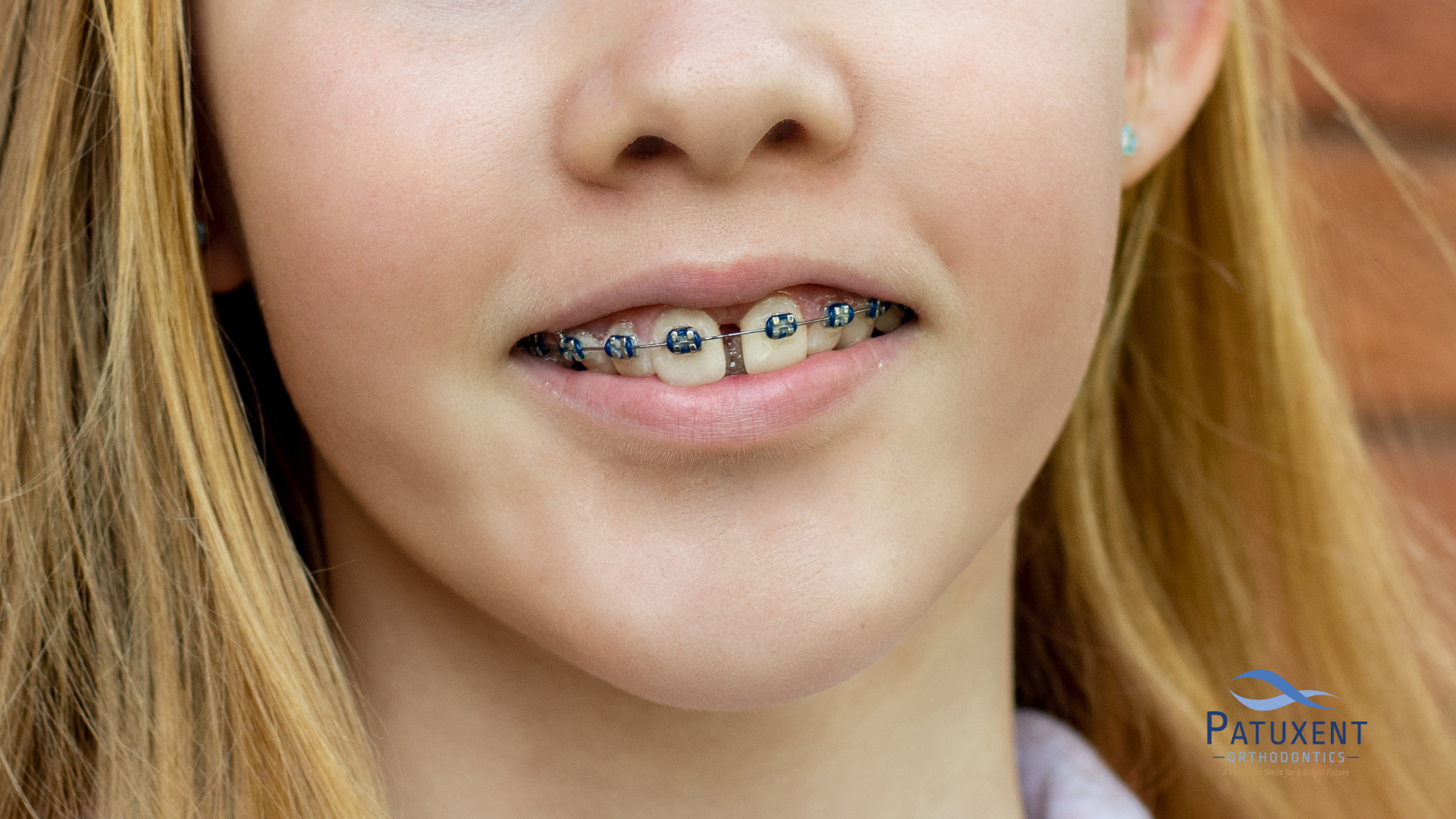Have you ever caught your reflection and paused, noticing subtle changes in your smile as you undergo orthodontic treatment? It’s common to closely observe the journey towards perfectly aligned teeth, but sometimes, you might spot something unexpected—like the formation of small gaps.
Braces, the stalwarts of straightening teeth and eliminating spaces, hold a few surprises up their sleeves. Their role in orchestrating the perfect smile often involves more than just pulling teeth closer; it can also include creating the right amount of space where needed.
But what does this mean for your smile? Are these gaps a cause for concern, or are they stepping stones to achieving that ideal alignment?
Together, we’ll explore how braces contribute to closing gaps and sculpting the spacing between your teeth for optimal dental health and aesthetics.

What Should I Do if I Have Gaps in My Teeth?
If you notice gaps in your teeth, especially between your two upper front teeth or other areas in your mouth, the first step is to consult with an orthodontist or a general dentist who specializes in orthodontic care.
Gaps, often referred to as diastema, can occur for various reasons—from the natural growth process as adult teeth grow to habits like thumb sucking or tongue thrusting in younger patients.
Orthodontic treatment, including braces, is a common and effective solution for closing gaps and achieving proper teeth alignment.
Braces apply gentle pressure over time to move teeth into their correct positions, effectively closing small spaces and creating a more aligned and aesthetically pleasing smile.
In addition to braces, your orthodontist may discuss other treatment options, such as dental bonding, clear aligners, or rubber bands, depending on the size of the gap and the alignment issues.
Maintaining proper oral hygiene and following your orthodontist’s advice, such as wearing retainers after treatment, is crucial to prevent gaps from re-opening and holding teeth in their new positions.
Braces Typically Fix Gaps in Your Front Teeth
Braces are typically used to close gaps, particularly between the two upper front teeth. During the braces treatment, orthodontic patients might initially notice small gaps forming as the teeth begin to move. This is completely normal and part of the process to achieve the final goal of a beautiful smile with aligned teeth.
Braces apply consistent pressure to push teeth into their ideal positions, including closing gaps between several teeth. This treatment can also correct a deep bite or realign the lower jaw, leading to improved chewing function and enhanced self-esteem.
For effective space closure, your orthodontist might use additional orthodontic appliances like rubber bands or a retainer. After wearing braces, it’s common to wear retainers to ensure the teeth stay in their proper positions and prevent gaps from reappearing.
Gaps between teeth, whether in the upper teeth, lower teeth, or back teeth, can be efficiently treated with braces and other orthodontic treatments.
The key is a personalized treatment plan from your orthodontist, who can guide you through the process to ensure you achieve and maintain a gap-free, beautiful smile.
Why Are My Braces Causing Gaps Instead of Closing Them?

It might be surprising and a bit concerning to notice new gaps forming in your teeth, especially when you’re undergoing braces treatment to close existing spaces. However, it’s essential to understand that it’s completely normal for new gaps to appear temporarily during orthodontic treatment. This phenomenon occurs as braces work to align your teeth into their ideal positions.
As the braces push teeth to correct alignment issues, they can create small spaces as a part of the tooth movement process. This is particularly common in the early stages of braces treatment.
For instance, if you have overcrowding, braces might create small gaps to allow teeth to move into their correct positions. Similarly, the movement of adult teeth, especially when wisdom teeth are involved, can also lead to temporary spacing issues.
Why Do Braces Make Gaps in My Teeth?
When you begin your journey with braces, the primary goal is to achieve a beautiful smile with well-aligned teeth. However, braces causing gaps, especially in the front teeth or between several teeth, is a part of the tooth movement strategy employed in orthodontic treatment. These gaps are a temporary stage in the process of correcting misalignments.
As your braces treatment progresses, the braces apply continuous pressure to move teeth into their ideal positions. This pressure can shift teeth, which may create temporary gaps. For example, the movement can result in a small gap if the upper front or lower teeth are aligned. This is a normal part of the treatment process and is typically addressed as the teeth gradually move into their proper positions.
Orthodontic patients may also experience gaps due to factors like the natural growth of adult teeth, the extraction of baby teeth, or the correction of a deep bite. In these cases, the braces are working to redistribute the space evenly across the mouth, leading to proper alignment and a more balanced bite.
While it may initially seem concerning, the formation of gaps during braces treatment is an ordinary and often necessary part of achieving the end goal of properly aligned teeth and a healthy, beautiful smile.
Your orthodontist will monitor these changes and make adjustments to ensure your teeth are moving toward their correct positions, closing any gaps in the process.
Why Is My Gap Coming Back after Braces?

It can be disheartening to notice a gap reappearing in your teeth after you’ve completed orthodontic treatment with braces, especially if closing this gap was one of the main goals of your treatment. There are several reasons why gaps might reemerge post-braces:
- Teeth Shifting: The most common cause for gaps returning is the natural tendency of teeth to shift back to their original positions after braces are removed. This is known as orthodontic relapse.
- Improper Retainer Use: If you’re not wearing your retainer as instructed, your teeth lack the necessary support to stay in their new positions, leading to gaps reappearing.
- Growth and Development: Changes in the jaw and oral structure, especially in younger patients who are still growing, can affect the alignment of teeth, potentially causing gaps to re-emerge, which may necessitate a second round of braces.
- Oral Habits: Certain habits, such as thumb sucking, tongue thrusting, or improper chewing, can exert pressure on teeth, leading to movement and the creation of gaps.
- Wisdom Tooth Eruption: The emergence of wisdom teeth exerts pressure on the other teeth, potentially causing shifts that lead to the reappearance of gaps.
3 Reasons Why You Must Use Your Retainer after Wearing Braces

The primary purpose of a retainer is to maintain the alignment achieved through braces. Teeth tend to return to their original positions, and retainers help hold them in their new, correct positions.
- Ensures Long-Term Results: Using your retainer correctly ensures that the time, effort, and resources you invested in wearing braces pay off in the long term. It helps maintain the results achieved for years to come.
- Stabilizes Your Bite: After orthodontic treatment, the bone and tissues around your teeth need time to adapt to their new positions. Retainers help stabilize the bite and ensure the tooth alignment remains consistent.
- Adapts to Continued Growth: Particularly for younger patients, the jaw and teeth can continue to grow and shift even after braces. Retainers can accommodate and manage these changes, ensuring the teeth remain aligned as the mouth matures.
Wearing your retainer as prescribed by your orthodontist is critical in ensuring the stability and longevity of your braces treatment results.
Neglecting to wear your retainer can cause teeth to shift, resulting in gaps reappearing and potentially necessitating further orthodontic treatment.
Regular follow-up visits with your orthodontist can also help monitor any changes in your teeth alignment and address them promptly.
Perfect Your Smile with Dr. Lee’s Orthodontic Services in Hollywood, MD!
Contact Patuxent Orthodontics if braces are the solution to your dental woes. Whether you want to learn more about the benefits of orthodontic care or have questions about the process, use our live chat, call (240) 802-7217, or message us through our Contact Us page to connect with our friendly staff today and book a complimentary consultation!
Our office, located at 44220 Airport View Dr., Hollywood, MD 20636, proudly serves Maryland’s Patuxent area, as well as the Greater Washington DC area. So, if you’re residing in Hollywood, Wildewood, or Leonardtown and are looking for one of the best orthodontists in Maryland, don’t hesitate to visit our office!
We also invite you to keep up with our blog to get answers to many of the frequently asked questions about maintaining your perfect smile, and follow us on Facebook and Instagram to become a part of our smiling community!











